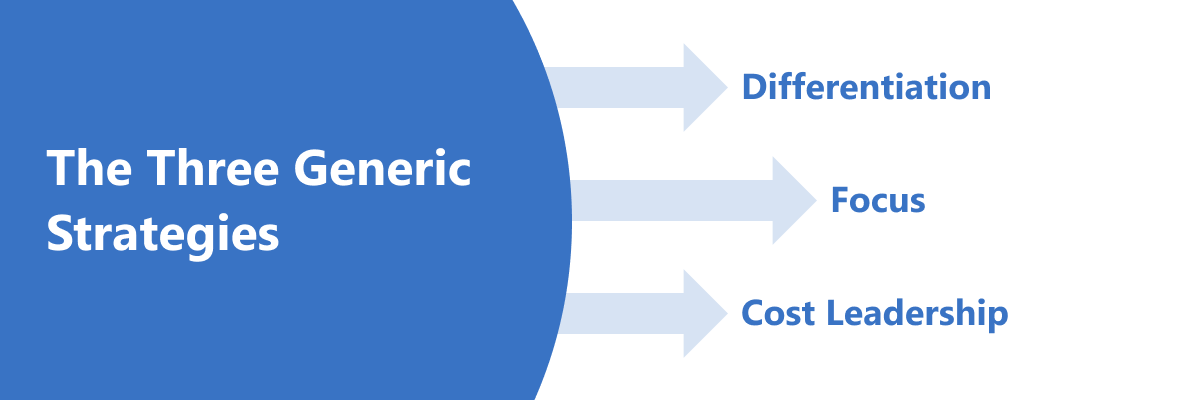The competition in the market is fierce. With each day, more companies are fighting for the single spot of market supremacy. If you want your business to stand out and give you an edge over your competitors, you should have a clear business-level strategy.
What is a Business-level Strategy?
It is an optimised plan for your business to give you profit while ensuring your place in the market. Though it seems like a simple question, it is just the tip of the iceberg. The strategy you choose is what will help your startup get a competitive advantage in the market.
Here are prominent business strategies you could use for a successful business journey to ease your decision-making process.
Types of business-level strategies
The prominent thing managers think while fixing a business development strategy is how they can increase the company’s profit and promote unity while taking on the competitors in mind.
There are different types of business-level strategies you could use. These are the broadly classified business strategies.
1. Corporate level strategies
At this level of business strategies, the changes usually occur at the highest level of the corporate, looking for ways to help the company reach a much wider audience while getting a higher profit. These strategies tell you which markets you should enter.
2. Business level strategies
You think about your company from a competitive viewpoint to gain market dominance. It shows how to present your product or service in a way that creates an impact in the minds of the consumers.
Doing market research can help you in the better planning of your business.
3. Functional level strategy
For a business to be successful, you need all your departments to work efficiently, and this strategy focuses on making that possible. It gives you a generic process to make all the departments function together, complimenting each other. Thereby ensuring people work passionately towards a common goal.
Here is how you can optimise your team for business growth.
Business strategy examples
A good business strategy always takes the broad market into consideration and is made by understanding the customers. There are a few examples of business strategies that will help you get your share of the market.
Micheal Porter, in 1985 explained in his book the three underlying generic strategies:
-
-
- Cost,
- Differentiation and
- Focus
-

We further divide this into many parts based on our needs and with market development a few extra ones were introduced.
1. Cost leadership strategy
Everybody loves a good deal, and this strategy focuses on giving customers the best deals while at the same time ensuring a profit. When put into technical terms, this is a series of steps taken to provide products and services that the customers want at a lower cost than the competitors in the broad market.
There is a common myth that by selling at a lower price, you would not get any profit; that’s not true. By following this type of strategy to give low prices for the product, you try to find efficient ways to improve your internal efficiencies like production, shipping and delivery.
By successfully implementing this growth strategy, you can undercut competitors with higher price points. But to keep this strategy, you should be strict with your money management and product development.
While everybody has the technology to their advantage, it is one of the main weaknesses of this strategy. Technology is growing as we speak, so the competitive edge you might have would be gone overnight due to a technology update. There is always an added threat of your competition trying to copy your success strategy.
Amazon is a company that uses a cost leadership strategy. It attracts customers by keeping the price low by buying products cheaply and combined with the fact that they do not have a physical store helps them to gain a profit.
2. Differentiation strategy
A differentiation strategy utilises the uniqueness of the products to gain market dominance. Apple uses this strategy to perfection. They introduce unique features which cannot be replicated and thus ensure brand loyalty and quality products.
We can accept a rise in the product price if the product satisfies our needs. Differentiation strategy is a strategy for the long term because effectively implementing this strategy means you get the trust of your target customers, and they will be ready to pay the premium price every time one of your products comes to the market.
While using this strategy, you have to be wary of your product quality and customer service, as customer loyalty is the ingredient in the success of this strategy.
3. Integrated business level strategy
When we mix the cost and differentiation strategy, we get the integrated strategy. The business growth strategy used here is to reduce the cost of production like in cost level and while giving the customer a good quality product. This strategy mainly focuses on the narrow market to cut costs according to the targeted market’s needs.
Checkers is a US-based fast-food company that follows this strategy. They give you quality food but not a place to sit and eat. They reduce the infrastructure cost as well as many expenses that come with it. But they still achieve a significant profit out of this strategy.
There is something to think about while devising this strategy. When you get successful with this strategy, there is a high chance that many companies with scalable economics will come to steal your thunder.
4. Focused differentiation strategy
Focused differentiation is similar to that of the differentiation strategy, but it targets a narrower market. It focuses on giving existing products or new products with maximum efficiency to the niche customer base.
Rolls Royce has specific criteria to determine who is worthy of a Rolls Royce, but when they give you a car, it will be state of the art. This way, they cater to the needs of the very few of the population but by giving them features that are unique and advantageous. They have the flexibility to choose from the existing markets.
Competition from your counterparts will always be a threat to watch out for while using this strategy.
5. Market penetration strategy
Just as the name implies, this strategy is used to slowly get into an existing market to acquire its share and gain more of your competitors’ customers.
By studying the market, your competitors and making changes to the product to promote it to the customers to gain market dominance. SaaS companies follow this strategy through various ways like acquiring smaller companies to expand their sales and services, partnerships, promotions and changes in product and pricing.
Android penetrated the software market when iOS were dominant by simply making their product more user friendly. Proper research is the crucial element while using this strategy, as the competition will be fierce.
Check out the types of research methods to launch a successful startup.
6. Expansion strategy
Expansion strategy is when a company or organisation attempts to achieve growth from its past stages by considering the market, functions and advances in technology.
The reasons for expansion would be to get higher profits, more significant market share etc. While expanding, there would be many risks to take but through proper planning expansion is possible.
There are many ways to help you expand your business. You have to plan according to the business model you are using.
Take a look at the top 15 strategies to quickly grow your company.
Takeaway

There are many business-level strategies to follow. Choosing the right one is just the first step in your long journey to create a successful business.
It doesn’t end with choosing a strategy. You would have to execute the strategy correctly. You need to identify your long-term goals, core competencies, and target market to optimise your strategy. Choose wisely and plan accordingly.
Being flexible is crucial because technology changes, new competitions arise, and you will be facing challenges daily. Always keep your aim in sight and make sure everyone working for you knows why they are doing this.
Now, take a look at how you can develop a growth strategy for your startup business.
Subscribe to our newsletter if you want to get more resourceful tips to grow your startup.





